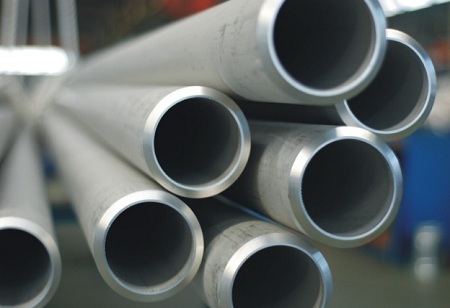The global
steel pipes and tubes market size is anticipated to grow at a Compound Annual Growth rate of 6.2 percent from 2020 to 2027. The major factors driving the growth of this market include the increasing oil & gas production due to the surge in demand from the transportation industry. The oil & gas industry is the major consumer segment for steel pipes and tubes since these are implemented for the transportation of gas and liquid in this industry. These pipes are manufactured using low alloy or carbon steel.
Steel tubes and pipes are also utilized in the automotive applications which comprise the tubes for diesel spark plugs, tubes for engine block heating, tubes for diesel particulate filters, and many others.
Rapid industrialization and increase in population have resulted in the increase in sales of properties, houses and construction expenditures, not just that, the governments of numerous developing economies are investing largely in infrastructural developments
and this has resulted in the surge in demand for steel tubes, which is one of the major factors set to drive the expansion of the steel tubes market, globally. Steel tubes are inexpensive, in other words, owing to their cost-effectiveness they are the most preferred in the residential and commercial building sectors for multiple construction purposes.
Although there is a surge in demand for steel pipes and tubes from various industries, the market growth is predicted to be hindered owing to the availability of substitutes for steel pipes such as plastic pipes manufactured using UPVC, HDPE, polypropylene, and many others. However, pipes made of the aforementioned materials can be used only in low and medium pressure areas.
Seamless technology
The seamless pipes were accounted for the largest market share of over 54 percent in the year 2019, and these are implemented in the oil & gas, power generation, chemicals and petrochemicals, and engineering industries. There are no seam welds in seamless steel products and these are manufactured using billets which are perforated and heated to create the tubular section.
The oil & gas sector dominates the seamless technology segment since this industry needs tubular products that can withstand high pressure, corrosive atmosphere, and mechanical stress. Therefore, seamless steel products are used for different applications in the Oil & gas industry. This includes upstream operations – Oil Country Tubular Goods (OCTG), midstream operations such as transmission and distribution of oil, gas, fluids, acids, steam, and slurries, and downstream operations.
Based on the region, Asia Pacific has emerged as the leading regional market and accounted for a revenue share of over 44 percent. last year and this region is predicted to grow at the fastest Compound Annual Growth Rate (CAGR) over the forecast period. This is due to the increasing product consumption in the Asia Pacific region, owing to the presence of huge manufacturing, petroleum, and petrochemical industries.
